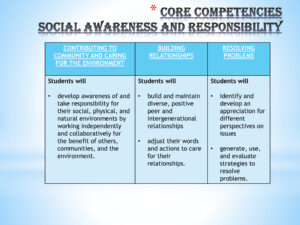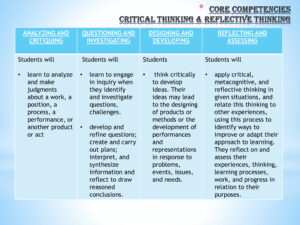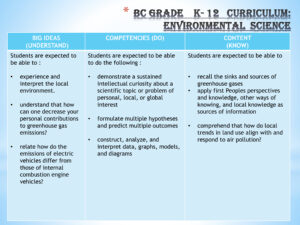After doing a lot of research on the effects of pollution on the environment, I have decided that the design of my project will be based on 3-4 week-long research where children will be first analyzing the data of air quality index of different regions of different months so that they can be sensitized about the harmful effects of pollution which has resulted in climate change over the years. Also, through this project, I want to instill curiosity among students by involving them in this inquiry-based project so that they come with up questions like: Are we really making any efforts to improve the situation because the climate has been tremendously affected due to human activities and how effective have pollution laws been? because certainly, during lockdowns due to Covid-19, we all could see the drops in air quality indexes, so does that mean that we were not bothered about the climate before this pandemic? Not only this, a historical-comparative analysis will also done to find the effect of industrialization on the environment. In this way, they will also be able to compare the steps taken by officials in the past to control the situation with the present scenario. This way students will experience the world and reflect upon those experiences. Also, they will be able to figure out the lapse done in past by giving solutions to the problems in present to improve the situation.Not only this, they will be able to build their own representations and incorporate new information into their pre-existing knowledge. I would like to add this quote by Albert Einstein which justifies the need to inquire!
The important thing is not to stop questioning .Curiosity has its own reason for existing.
-Albert Einstein-
Topic Highlights, Resources, and Research:
The real goal of this project is to find out:-
- How do changes in the composition of the atmosphere lead to changes in the levels of air pollution?
- What are some of the human activities that contribute to increased levels of air pollution? How to calculate the greenhouse gases which are responsible for air pollution?How to reduce them ?
I will use the scientific method for this project which was used even in ancient times, first documented by England’s Sir Francis Bacon (1561–1626) who set up inductive methods for scientific inquiry. The scientific method can be applied to almost all fields of study as a logical, rational, problem-solving method which includes the following steps:
Step-1: State the Problem
Step 2: Research, and Hypothesize or Predict
Step 3: Plan Experiment and Gather Data
Step-4: Analyze the Data and Make a Conclusion
Step-5: Assessment and take action

Stage 1: Stating the problem
For young scientists, the first stage in the scientific method is to state the problem. Students are curious about the world around them. They observe the phenomenon and want to understand why things happen. Then they come up with a question or problem. Once the problem is stated, students move on to the next steps of developing a hypothesis and experimenting. Students will be shown videos and photographs of the harmful effects of pollution on the environment which will increase student’s curiosity to identify the root cause behind the problem and come out with their solutions. A brainstorming session was initiated by throwing the following inquiry questions :
- -Are we really making any efforts to improve the situation because the climate has been tremendously affected due to human activities and increased air pollution and how effective have pollution laws been?
- What they think happens when fossil fuels are burned?
- How do people and their practices impact Earth and air pollution?
This will be done prior to introducing the idea of this inquiry project.
Before students move ahead, it is imperative to create specific criteria that can be used to assess the quality of their work throughout the process. A rubric will be created in collaboration with students with headings: Inquiry, Knowledge and skills, communication, Effect on the community, Teamwork, Work habits which will be also useful for the students for self-assessment throughout the process.
Stage 2: Research, and Hypothesize or Predict
Once students will state a problem, they gather as much information as they can about their questions. This may include looking at the results of earlier scientific studies, interviewing experts, reading, and observing. Good research requires critical thinking, for example, one must make sure the source of your information is reliable, and it is a good idea to find multiple sources to confirm the information one gathers. For this, I have planned an activity in which students will do some brainstorming regarding the skyrocketing air quality indexes which will make them more curious. In this stage, children will be asked to compare the air quality index of different regions for the month of January 2020 and June 2021. The comparison between these two months has been specifically mentioned because a significant difference in AQI was observed due to COVID-19 lockdown worldwide as already mentioned in topic exploration. After doing the brainstorming and background research, students would be able to relate the impact of air pollution on the environment and set hypotheses. A historical-comparative analysis will also be done to find the effect of industrialization on the environment.
Hypothesis or Prediction
A hypothesis is a possible explanation for a question or problem that can be tested with an experiment. Research is necessary before a scientist can come up with a good hypothesis; otherwise, a hypothesis would just be a wild guess. Hence, after doing extensive research during brainstorming, students will be expected to formulate the following hypothesis :
The composition of the atmosphere leads to changes in the global climate and it is the human activities that contribute to climate change.
A sample is attached for the comparison of AQI of different regions in various months.
Stage – 3: Plan Experiment and Gather Data
In an experiment, scientists collect information under controlled conditions to test the hypothesis. The information is then analyzed to see if the hypothesis was correct. The experimentation process is necessary because it allows scientists to test the validity of their assumptions. It is often important to perform the experiment a number of times, changing some of the variables as you go along. This allows you to isolate and examine how particular variables impact different aspects of the experiment. Experiments should ideally be performed by many scientists in order to verify the results and to truly test the validity of the hypothesis. I have tried to incorporate a variety of experiments to test the hypothesis. In the first two activities,
Students will be able to:
- describe at least two problems with burning fossil fuels that are affecting climate change by performing experiments on candle pollution and the greenhouse effect.
- recommend solutions for reducing the use of fossil fuels.
In addition, I have planned one more activity that will provide students with an example of
how “dirty” our air is and what can be done to improve this situation? (optional)
After this, once the students know the composition of the atmosphere due to air pollution and what soot is, and how it is created, they will conduct a survey in their neighborhood or school by calculating carbon footprint based on the size of their household, the efficiency of their appliances, how much they drive or fly, what they eat, and how much they recycle as this will help us to know the total greenhouse emissions which are responsible for increased levels of air pollution.
Stage 4: Analyze the Data and Make a Conclusion
By carefully looking at the results of the experiment, students can analyze the observations and draw a conclusion about whether the hypothesis was proven. Perhaps there is another explanation for your question or problem. It is necessary to look at all aspects of the experiment. What worked? What didn’t? Why not? It is important not to rule out data that does not support the hypothesis. All data should be reviewed in the formulation of a strong, fact-based conclusion.
Step 5: Assessment
Students will compile all the documents, observations, and data created during the project and turn them into a narrative of their project. Also, students will add a reflection piece that states what it felt like to undertake this project. What was the most important lesson learned? Gather all these materials and build either a website, scrapbook or series of illustrated articles about this project to share with others. Instruct students that if possible, check back with your classmates a year later to see how you all are continuing to conserve energy and make a difference to prevent global warming and maintaining the levels of air pollution! Send us your results with a Web site update or with a scrapbook.
Write up a one-page tip sheet that includes your best day-to-day energy-saving ideas and ways to reduce carbon footprints. Send the tip sheet out to local media, government, business leaders, and other schools to participate in the campaign’s most successful most important investigation. In the invitation, students will use research to explain the problem of pollution that is leading to change in global climate i.e, global warming, and how it impacts the local ecosystem.
Curriculum connections :
To apply project design practically, I have tried to use the BC Curriculum of Grade 12 Environmental Science for demonstrating curriculum connections in a nature-based learning environment.( Reduced curriculum connections)



First Peoples Principles for Learning for the grade K-12 of Environmental Science
This inquiry project aims to apply First Peoples’ perspectives and knowledge, other ways of knowing, and local knowledge as sources of information. It will help students to express and reflect on a variety of experiences, perspectives, and worldviews through the place; the place is any environment, locality, or context with which people interact to learn, create a memory, reflect on history, connect with culture, and establish identity. The connection between people and place is foundational to First Peoples’ perspectives. This inquiry project will also help students to understand that how has air pollution impacted the food sources of Canada’s northern First Peoples populations?
The following are the relevant first People’s principles of learning related to this project :
- Learning ultimately supports the well-being of the self, the family, the community, the land, the spirits, and the ancestors
- Learning involves generational roles and responsibilities.
- Learning recognizes the role of indigenous knowledge.
- Learning involves patience and time.
- Learning requires exploration of one’s identity.
Source : https://www2.gov.bc.ca/assets/gov/education/kindergarten-to-grade-12/teach/teaching-tools/aboriginal-education/principles_of_learning.pdf
Inquiry-Based Learning Pedagogy
Inquiry-based learning being student-centered resembles how we actually pursue knowledge. Technology can be used while gathering the information in stage 1 and throughout all parts of this learning process. Inquiry-based learning can be used across disciplines and multiple skills or knowledge areas can be reinforced in different parts of this project. These learning experiences provide students with the opportunity to learn, develop and use a range of skills important to becoming lifelong learners including:
- information processing skills (research and information literacy)
- critical and creative thinking skills
- communication skills
- and reflective and metacognitive skills.
Inquiry-based project work involves a group of students investigating a worthy question, issue, problem, or idea. These projects involve serious engagement and investigation. I have taken the reference from the Inquiry project rubric shared at Glilieo Education Network and tried to relate it with my Inquiry project.

